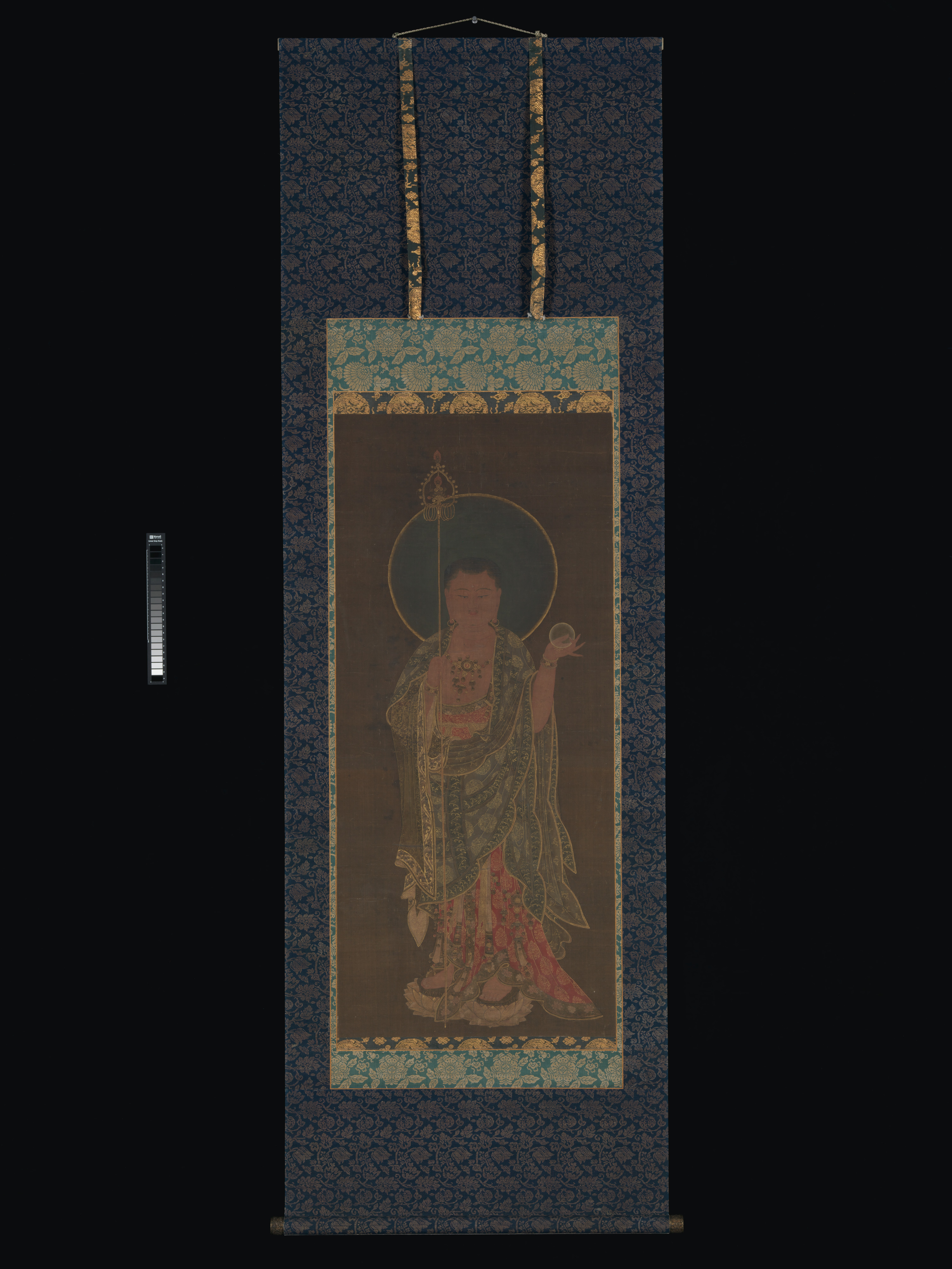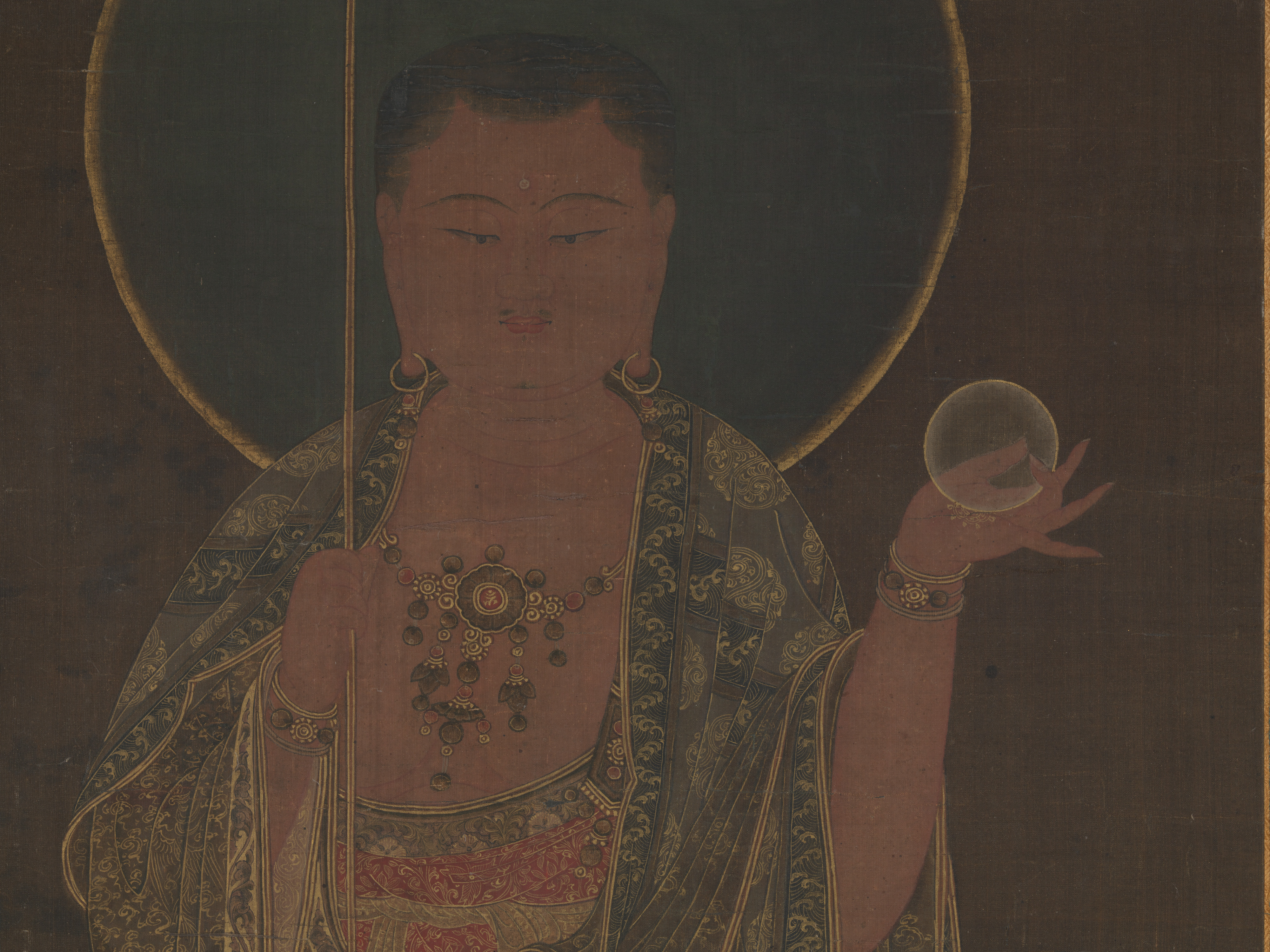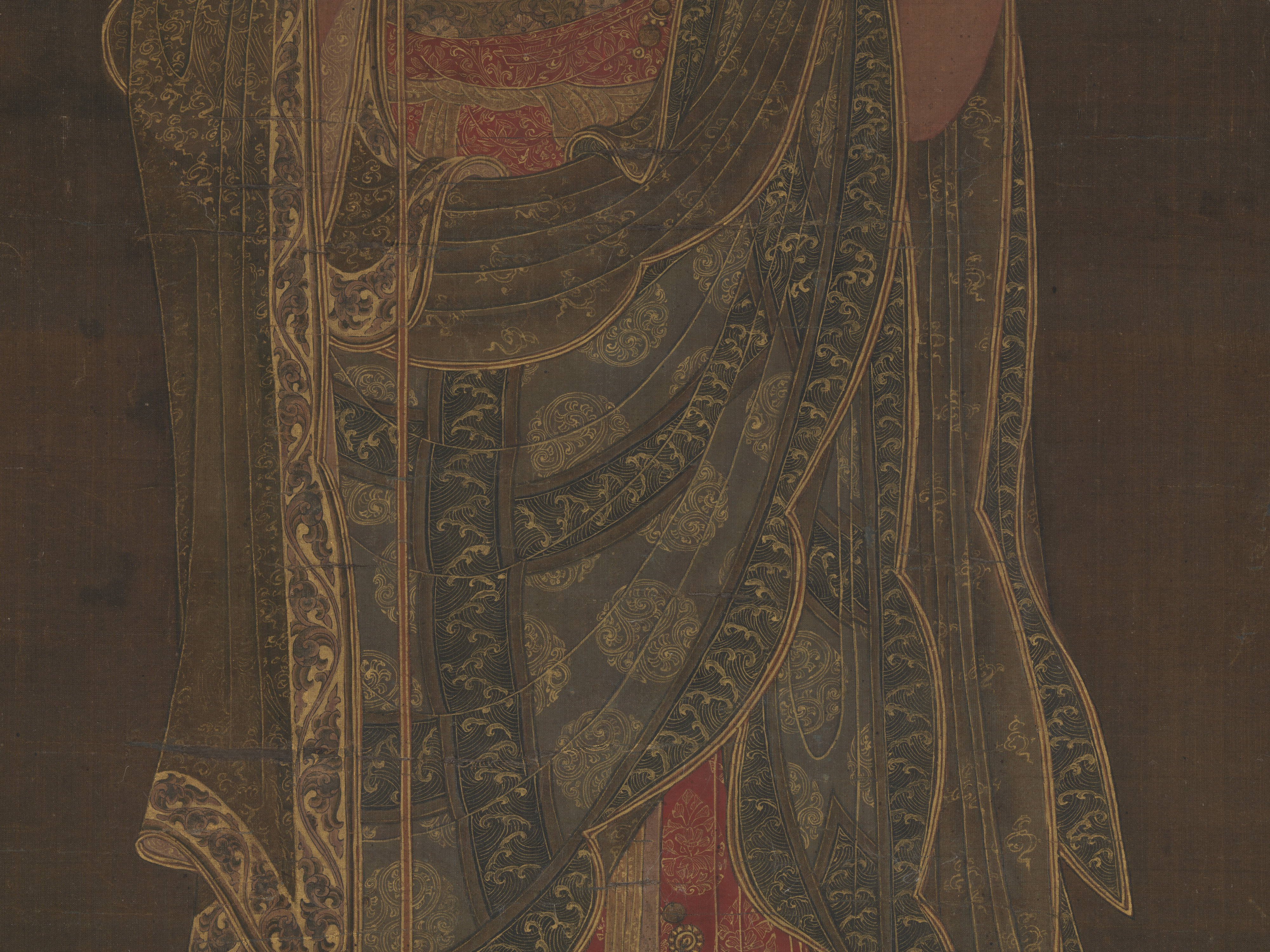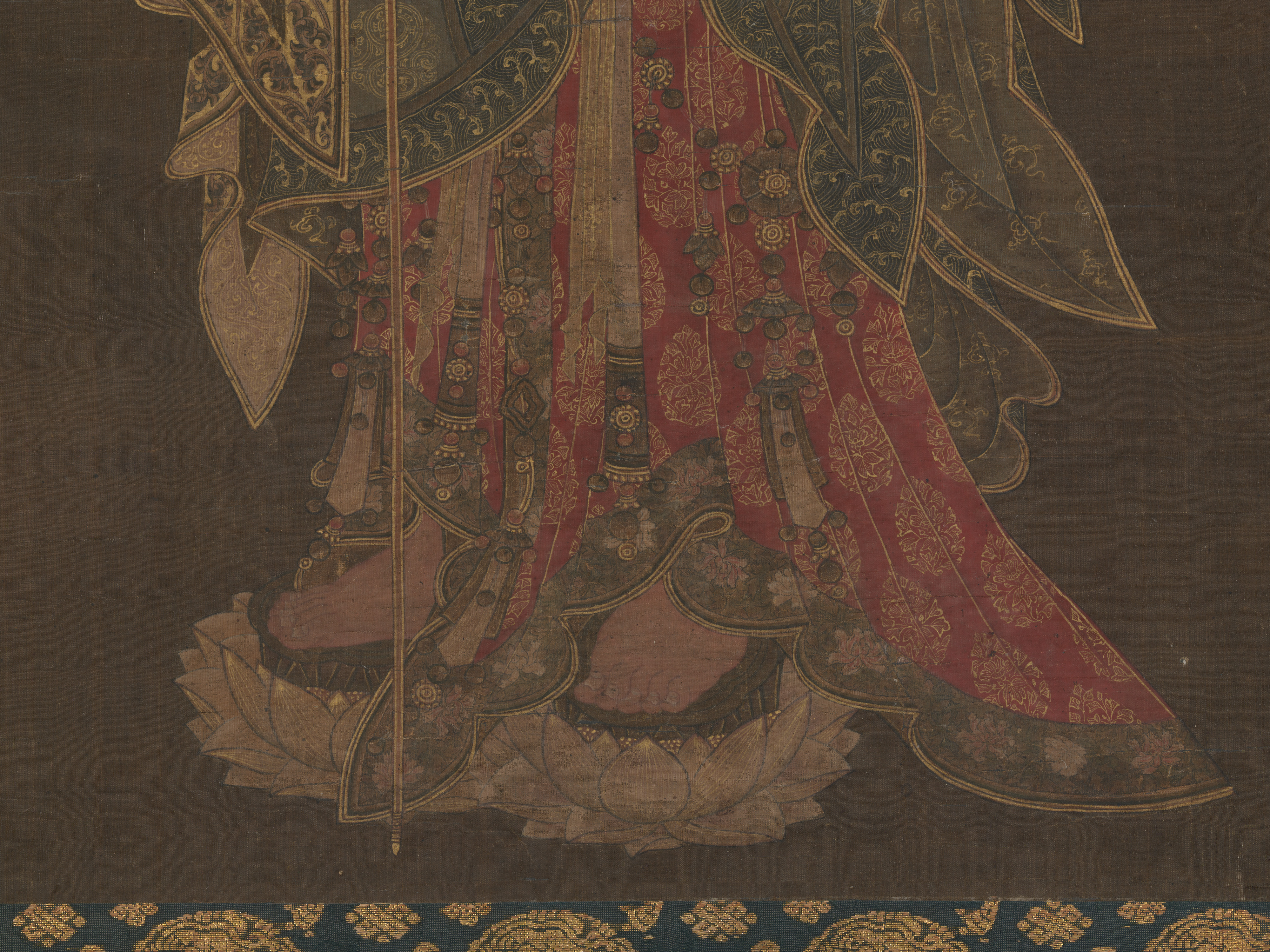Kshitigarbha
Not on view
A compassionate bodhisattva who rescues sentient beings from descending into hell or purgatory, Kshitigarbha (Korean: Jijang) became enormously popular during the Goryeo period. A key figure in Pure Land Buddhism, Kshitigarbha was often depicted singly and in the guise of a monk—with a shaved head, wearing a monk’s robe, and holding his standard attributes, a staff and a wish-fulfilling jewel (cintamani). This exquisite scroll is a well-preserved example of Goryeo Buddhist painting. Some of its hallmarks are the deity’s graceful facial features and slender fingers, the red and green colors of the robe, and the sumptuously elegant gold decoration.
Very few Korean paintings made prior to the fourteenth century survive. Buddhist paintings of the Goryeo dynasty are renowned for their delicacy and refinement. Most, if not all, were commissioned by members of the royal family and the aristocracy and were painted by monk-painters or professional court painters.
Due to rights restrictions, this image cannot be enlarged, viewed at full screen, or downloaded.
This artwork is meant to be viewed from right to left. Scroll left to view more.






